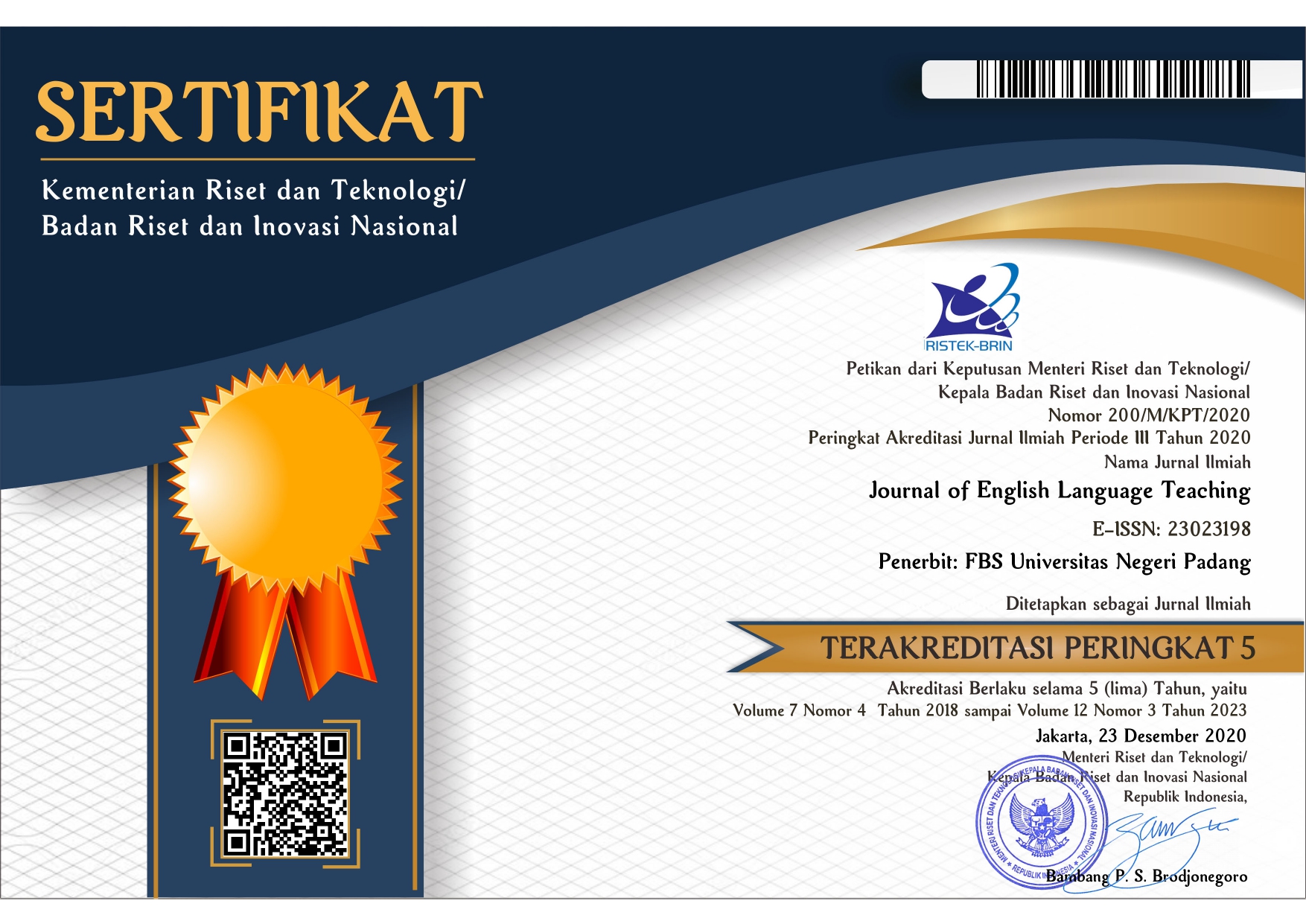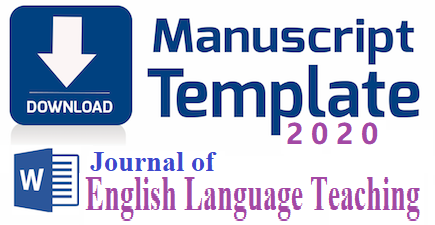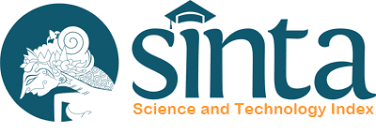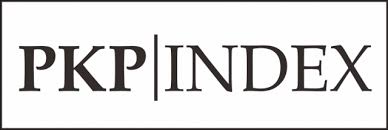Anxiety Found in a Classroom with EMI Settings in Economics Education Department International Class at Universitas Negeri Padang
 ), Aryuliva Adnan(2),
), Aryuliva Adnan(2), (1) Universitas Negeri Padang
(2) Universitas Negeri Padang
 Corresponding Author
Corresponding Author
Copyright (c) 2024 Rachmad Syamsu Dhuha, Aryuliva Adnan
DOI : https://doi.org/10.24036/jelt.v13i3.130650
Full Text:
 Language : English
Language : English
Abstract
Keywords
References
Botes, E., Dewaele, J.-M., & Greiff, S. (2020). The Foreign Language Classroom Anxiety Scale and Academic Achievement: An Overview of the Prevailing Literature and a Meta-analysis. Journal for the Psychology of Language Learning, 2(1), 26–56. https://doi.org/10.52598/jpll/2/1/3
Creswell, J. W., & Creswell, J. D. (2014). Quantitative Research Procedures. In Research Defign: Qualitative, Quantitative, and Mixed Methods Approaches.
Ernawati, E., Sofendi, S., & Silvhiany, S. (2021). English as a Medium of Instruction (EMI): A primary school teachers’ and students’ perceptions. International Journal of Research in Counseling and Education, 5(1), 24. https://doi.org/10.24036/00414za0002
Hülmbauer, C., & Seidlhofer, B. (2013). English as a lingua franca in European multilingualism. Exploring the dynamics of multilingualism, 387-406.
Mauranen, A., Hynninen, N., & Ranta, E. (2010). English as an academic lingua franca: The ELFA project. English for Specific Purposes, 29(3), 183-190.
Kudo, S., Harada, T., Eguchi, M., Moriya, R., & Suzuki, S. (2017). Investigating English speaking anxiety in English-medium instruction. Essays on English Language and Literature [Eigo Eibungaku Soushi], 46, 7–23.
Kusmayanti, I. N., Hendryanti, R., & Suwarsono, L. W. (2022). Exploring Indonesian university students’ speaking anxiety in online English medium classes (EMI). Bahasa Dan Seni: Jurnal Bahasa, Sastra, Seni, Dan Pengajarannya, 50(2), 209. https://doi.org/10.17977/um015v50i22022p209
Threrapy, R. (2023). Student Handbook. July, 1–13.
Simbolon, N. E. (2018). Emi in indonesian higher education: Stakeholders’ perspectives. Teflin Journal, 29(1), 108–128. https://doi.org/10.15639/teflinjournal.v29i1/108-128
Wolff, D. (2003). Integrating language and content in the language classroom: Are transfer of knowledge and of language ensured? ASp. la revue du GERAS, (41-42), 35-46.
Kusmayanti, I. N., Hendryanti, R., & Suwarsono, L. W. (2022). Exploring Indonesian university students’ speaking anxiety in online English medium classes (EMI). Bahasa Dan Seni: Jurnal Bahasa, Sastra, Seni, Dan Pengajarannya, 50(2), 209. https://doi.org/10.17977/um015v50i22022p209
 Article Metrics
Article Metrics
 Abstract Views : 32 times
Abstract Views : 32 times
 PDF Downloaded : 14 times
PDF Downloaded : 14 times
Refbacks
- There are currently no refbacks.
Copyright (c) 2024 Rachmad Syamsu Dhuha, Aryuliva Adnan

This work is licensed under a Creative Commons Attribution-NonCommercial 4.0 International License.
















